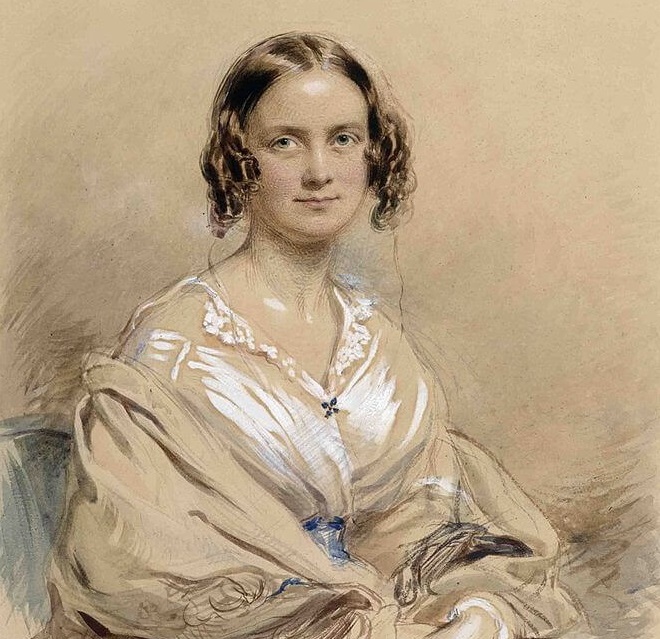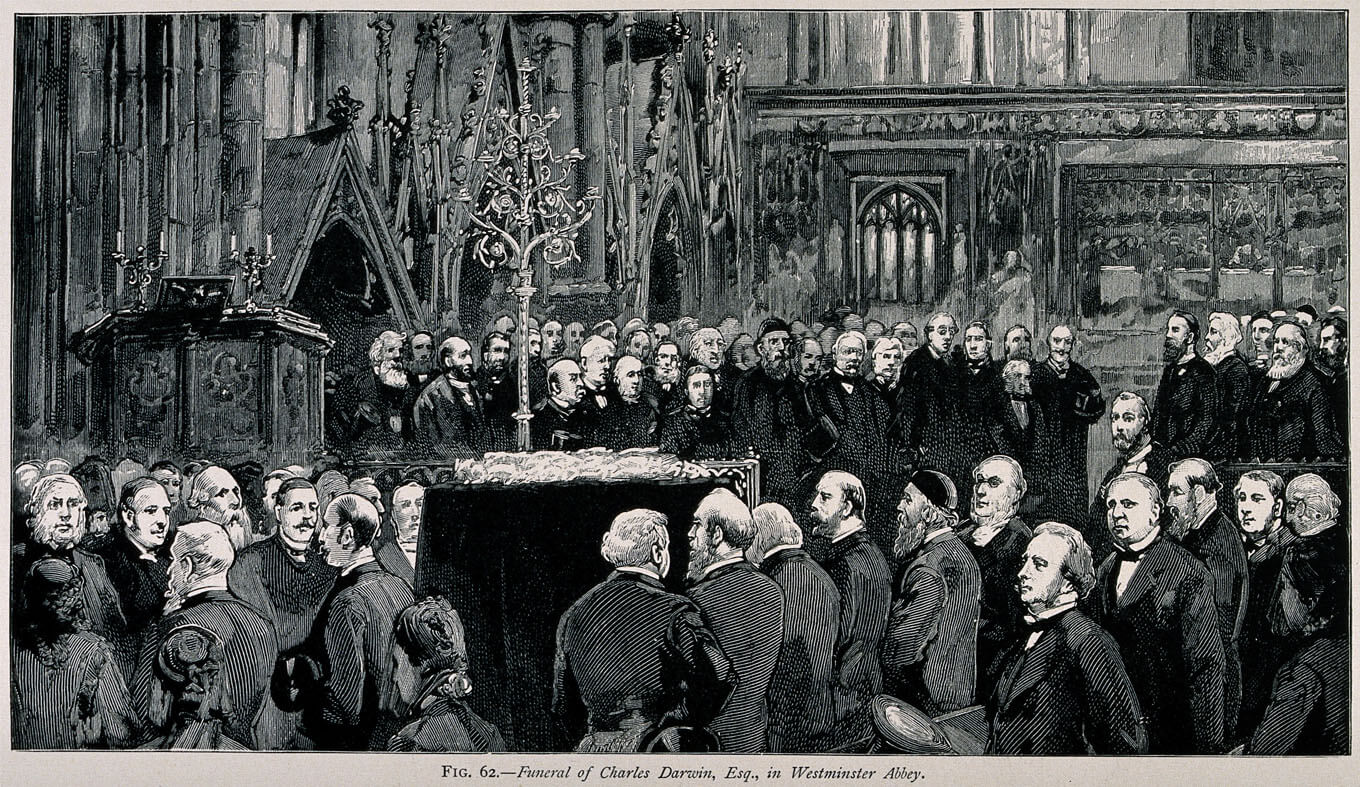Constructing Theories (1836-1882)
When Darwin got back to England in 1836, he went straight to see his family in Shrewsbury, and then down to Cambridge to see Henslow and to decide what to do with the enormous collection of specimens from his travels. Once he had settled in London, he wrote Voyage of the Beagle and several other papers which he read in lectures. Importantly, during this time he also started to write his notes for his book titled “On the Origin of Species“…
Darwin described his wife Emm as his greatest blessing. Emma Wedgewood was Darwin’s first cousin (marrying your cousin was common in the nineteenth century) and the daughter of Josiah Wedgewood, the uncle who helped convince Darwin’s dad that he should go on the Beagle voyage. They married in 1839 and had ten children. Unfortunately, three of their children died while they were very young, two (Mary and Charles) when they were babies, and Ann when she was ten. Ann was one of Darwin’s favourite children, and her death affected him deeply. Despite these terrible losses, the Darwins were a very happy family – Darwin loved playing with his children and he would also bring Emma and the children into his science experiments at home and in his garden.
Darwin suffered from bad health for most of his life, and his symptoms (which included heart problems) were made worse by his busy life in London, so he and Emma decided to move to the countryside. After looking at a lot of different houses, they settled at Down House in the small village of Downe in Kent.

I marvel at my good fortune that [Emma], so infinitely my superior in every single moral quality, consented to be my wife.
Charles Darwin
It took him a lot of time to think about his ideas. It took Darwin 22 years to complete his book about his theory of Evolution by Natural Selection, which was called “On the Origin of Species“. Darwin had started to think about his theory in 1839, however, he knew that it might upset some people, so he decided not to write his ideas down. In 1844, Darwin was still thinking about his theory, and decided to write a bit about it. Some scientists had thought about evolution before, but no-one had thought about it properly yet because there wasn’t enough evidence, so Darwin knew that he wanted to make sure that he could prove he was right before he published his book.
In 1858, another British naturalist called Alfred Russel Wallace sent Darwin a copy of a paper he had written called “On the Tendency of Varieties to depart indefinitely from the Original”, which to Darwin’s surprise showed that Wallace had had similar ideas to his own. Darwin’s friends, Charles Lyell and Sir Joseph Hooker, told him that he should publish his own theories quickly so that people would know that he had the idea first, however, Darwin did not mind that Wallace had had the same idea as him, and a plan was made for both ideas to be presented together at the Linnean Society. Darwin was a little worried that Wallace’s paper was very well written, whereas he had not taken as long to write his thoughts out properly yet. Unfortunately, nobody took much notice of either of the papers, and Darwin knew that if he was going to get his ideas across properly, he needed to write in lots more detail.
Publishing Ground-Breaking Theories…
After the presentation of his ideas at the Linnean Society in 1858, Darwin started to write “On the Origin of Species” as we know it today and it was first published in November 1859. It sold very well all over the world, and it has been translated into many different languages. Darwin added new information to the first few editions of the book as it was re-published, including how the finches in Galapagos (now known as Darwin’s finches) helped him develop his ideas on natural selection. The reception to his book was mixed; some people found it very exciting, and others thought the idea was ridiculous. Darwin later said that if Wallace had not had the same idea at the same time, he would have probably taken a lot longer to write the book and it would have been too long for anybody to read it.
Because of his bad health, it became harder for Darwin to leave his home to meet his friends, and even having friends come to visit him made him feel ill, therefore despite the world’s attention on his work, he stayed at home, talking to his friends through letters and articles. In 1882, Darwin was diagnosed with disease of the heart, and he died at his home in Downe on 19 April 1882 surrounded by his family. Darwin would have expected to have been buried in the local church yard, however, his friends started a petition to have him buried at Westminster Abbey in London, next to other well-known scientists. His funeral was on 26 April, and it was attended by thousands of people including Thomas Henry Huxley, Joseph Dalton Hooker and co-founder of evolution, Alfred Russel Wallace.

